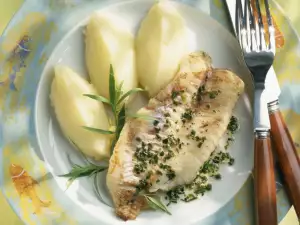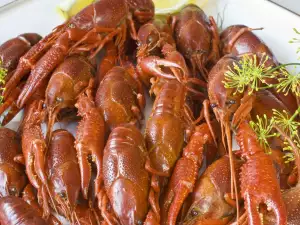Barbels (Barbus) is a genus containing 300 species of fish, found in different rivers all over the world. Barbels belong to the carp family. What most of the species share in common is their pair of whiskers (barbels). The larger representatives of the Barbus genus are used for food, while the smaller and more colorful species are kept as pets in aquariums.
Species of Barbel
Since there are over 300 species, let's focus on just a couple of them: the common barbel (Barbus barbus) and Mediterranean barbel (Barbus meridionalis). The Mediterranean barbel has an elongated scaly body that can reach up to 15 3/4″ (40 cm) in length. This species can reach a weight of up to around 2 lb (1 kg). The coloration of the Mediterranean barbel depends mainly on the environment it inhabits. If the river bottom is sandy, it usually has a golden color.
There are also darker spots visible on the body. If surrounded primarily by stones, the fish can attain silver nuances. The dorsal area of this species is dark. The Mediterranean barbel has fleshy lips and 2 pairs of barbels.
The common barbel (Barbus barbus) is distinguished by an elongated body covered with regularly arranged scales. The torso of the fish can reach up to 39 1/2″ (100 cm) long. The common barbel is heavier than the Mediterranean barbel, each specimen capable of reaching up to 17.5 lb (8 kg). The dorsal area is dark grey or brownish.
The belly is silver or white. Its sides are colored golden and its head is elongated. The common barbel has a strong mouth and 2 pairs of barbels.
Barbel Behavior
The Mediterranean barbel inhabits the bottom zones (demersal) of water bodies. When the spring months arrive, it heads toward the deeper areas of rivers. It swims in schools, with usually all members of the school being from the same clutch. This species reproduces in the period from May to June.
The roe is released on the rocky bottom. Reproduction takes place when the temperature of the water is about 60°F (15 °C). About 2 weeks are needed for fry to appear. The diet of the fish consists of various types of organisms, most often ones that can be found on the actual river bottom - larvae, other fry, worms and vegetation.
The common barbel also swims in schools and is usually more active at night, rarely seen during the day. Normally it gets moving in search of food only if it's convinced that nothing will disturb it. It loves fast flowing waters and rocky bottoms. Whenever the common barbel feels threatened it hides among rocks and dense underwater vegetation.

When temperatures begin to rise, the common barbel begins its search of suitable spots to release its roe. Usually the fry appear between the 8th and 14th day. The common barbel grows quickly. Its diet is comprised of nearly all organisms that can be found along the bottom.
Catching Barbel
Usually, Mediterranean barbel is caught by bobber or bottom fishing. Fishermen use a light rod for this species of fish. For bait you can use all sorts of organisms like worms, caddisflies, boiled wheat, dough.
Common barbel is usually caught using bottom fishing. It's best to start fishing for it early in the morning or at dusk. A strong fishing pole and sinkers are required for common barbel so that they can withstand the strong currents. For casting, pick out an area with a rocky or clay bottom.
Suitable bait for common barbel during hot days is boiled wheat, corn, dough, cheese. During colder weather, fishermen bet on worms, leeches, small snails, mole crickets.
Cleaning Barbel
Wash the barbel well under running water. Then clean it thoroughly of its scales. Remove the head and tail. Cut it in 2 along its back and remove the insides. Then wash the meat once again and dry it. You can salt it or cook right away. If when cleaning the fish you come across roe, it's best to throw it away since according to some it can be toxic in certain periods.
Cooking Barbel
Mediterranean barbel has soft and appetizing meat, which looks firm and has a light taste. A positive quality of it is the absence of any intrusive smell. Another plus is that the bones come off the meat easily in this type of fish. There are different ways of preparing Mediterranean barbel but chefs claim it's best when fried.

In the different specialties it's best seasoned with black pepper, paprika, chili, soya sauce and white wine. The common barbel has no less culinary qualities than its cousin. The meat is tasty and goes excellently with vegetables. Only the small annoying bones might deter you from this fish. The common barbel is very delicious baked in the oven, steamed in foil or fried in a pan.
Benefits of Barbel
Eating barbel is not just a treat for the taste buds, it's a feast for body as well, since it provides it the beneficial substances that every fish is rich in - vitamins А, В1, В12, D, Е and others. Consumption of barbel improves brain and heart function. Further, the fish is dietary, making it a worthy ally in the battle with excess pounds.













Comments